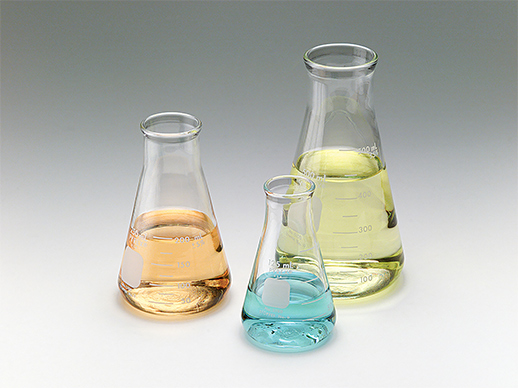| Composition: | Polyethylene glycol oleate |
| English name: | Polyethylene glycol oleate |
| Type: | Non-ionic |
|
SPEC. |
Vist Insp (25℃) |
Acid value mgKOH/g |
Saponification value mgKOH/g |
Active ingredients (%) |
HLB |
|
PEG400MO |
Amber liquid |
≤5 |
75-95 |
≥99% |
11〜12 |
|
PEG400DO |
Amber liquid |
≤10 |
100-130 |
≥99% |
7~8 |
|
PEG600MO |
Amber liquid |
≤5 |
60-75 |
≥99% |
13〜14 |
|
PEG600DO |
Amber liquid |
≤10 |
85 ~ 105 |
≥99% |
10〜11 |
|
PEG-264 Oleate |
Yellow liquid |
≤2 |
115-125 |
≥99% |
一 |
|
SPEC. |
Performance and application |
|
PEG400MO |
Soluble in benzene, isopropanol, and dispersed in water. Used as industrial special lubricant, industrial degreasing agent, vinyl plastisol viscosity stabilizer, textile softener, lubricant. Prepare dry cleaning agent, oil-based cutting fluid balance emulsifier. Antistatic agent and dispersant for plastics, biodegradable. |
|
PEG400DO |
PEG400DO: Soluble in mineral and vegetable oil, dispersed in water. Used as W/O emulsifier, solubilizer, kerosene emulsifier, industrial lubricant. |
|
PEG600DO PEG600MO |
1.Soluble in water, has good washing, emulsifying and lubricating properties. 2.Cosmetic species as O/W emulsifier. Used as leveling agent, dispersant and softener in textile industry. Used as a lubricant in metal processing. It can be used as an emulsifier for insecticides in pesticides, and can also be used for pickling of water-soluble paints and printed circuit boards. |
|
PEG-264 Oleate |
1 .It is easily soluble in oil and organic solvents, and has good smoothing and emulsifying effects. 2.Widely used as an emulsifier in the manufacture of synthetic fibers, it has the characteristics of low freezing point, good viscosity-temperature properties, low volatility, and good oxygen resistance. |
200KG iron drum/plastic drum, 50KG plastic drum, IBC, flexitank, tank car.
This series of products is non-toxic, non-flammable, according to the general chemical storage.lt is transported as non-toxic and non-dangerous goods, stored in a dry and ventilated place, storage period of two years.
Polyethylene glycol oleate's CAS number is 9004-96-0. PEG400MO, PEG400DO, PEG600MO, and PEG600DO are the main models.
PEG400MO and PEG400DO are both non-ionic surfactants produced by the etherification reaction of polyethylene glycol (PEG400) with fatty alcohols. PEG400MO is an ether formed by the condensation of PEG400 with monooleyl alcohol (or similar monohydric alcohols), exhibiting excellent emulsifying, wetting and dispersing properties. It is commonly used in detergents, cosmetics and emulsions to facilitate the uniform dispersion of oily substances in water. PEG400DO, however, is a derivative formed by the condensation of PEG400 with dioctyl alcohol (or similar diols). Its molecules contain relatively larger lipophilic groups, resulting in stronger oil-phase compatibility and lower foaming properties. It is suitable as an emulsifier, softener, and defoamer, finding particularly widespread application in industrial systems requiring foam control.
In contrast, PEG600MO and PEG600DO are products formed by condensing PEG600—a higher molecular weight PEG with stronger hydrophilicity than PEG400—with monoalcohols or diols. These derivatives exhibit superior solubility in water and enhanced emulsion stability. PEG600MO is frequently employed in cosmetic, pharmaceutical, and food-grade formulations demanding high water solubility and uniform emulsification, delivering a refreshing, non-greasy skin feel. PEG600DO, featuring larger lipophilic segments and longer hydrophilic segments, serves dual dispersing and stabilising functions in oil-in-water emulsions. Consequently, it is particularly suited for high-end emulsions, fabric softeners, metalworking fluids, and industrial emulsions requiring long-term stability.
Generally speaking, the MO series (Mono) leans more towards enhancing emulsification and wetting, while the DO series (Dioleyl/Dioctyl) places greater emphasis on softening, defoaming, and stabilisation. The PEG400 series features a relatively low molecular weight, offering good solubility and fluidity, whereas the PEG600 series exhibits stronger hydrophilicity and provides greater stability in emulsion systems.
